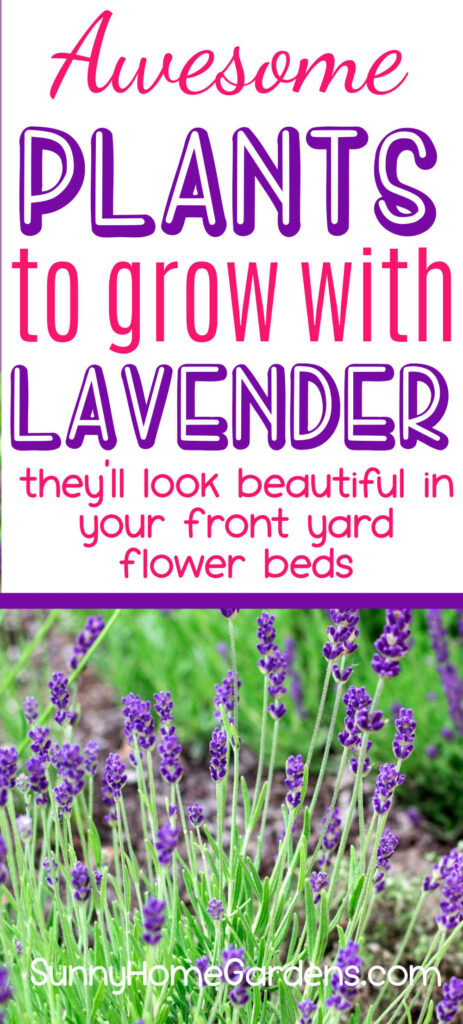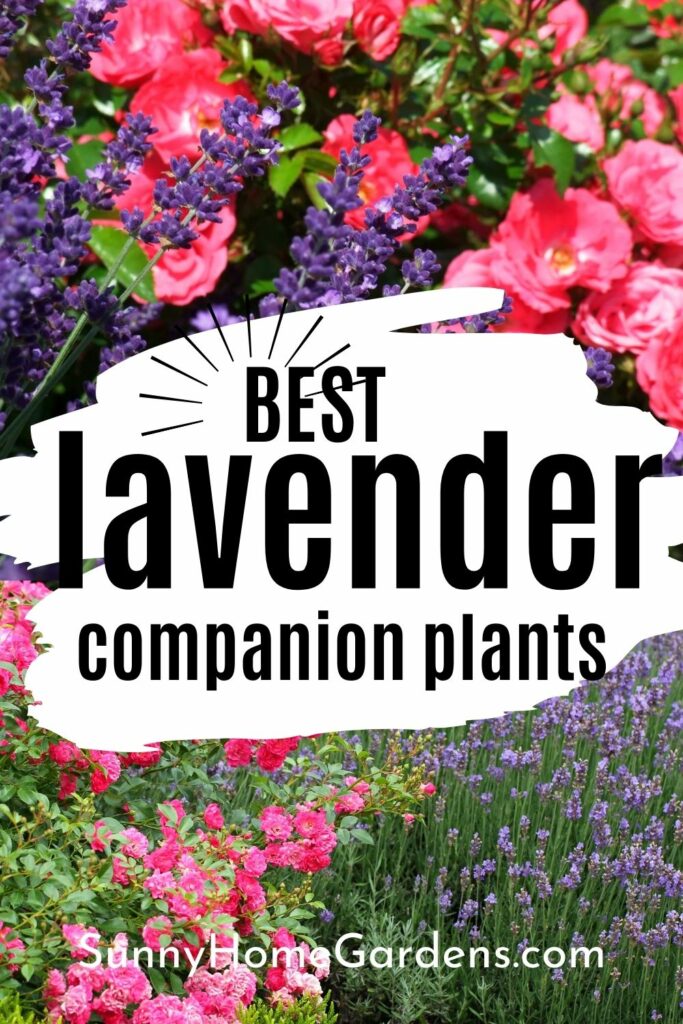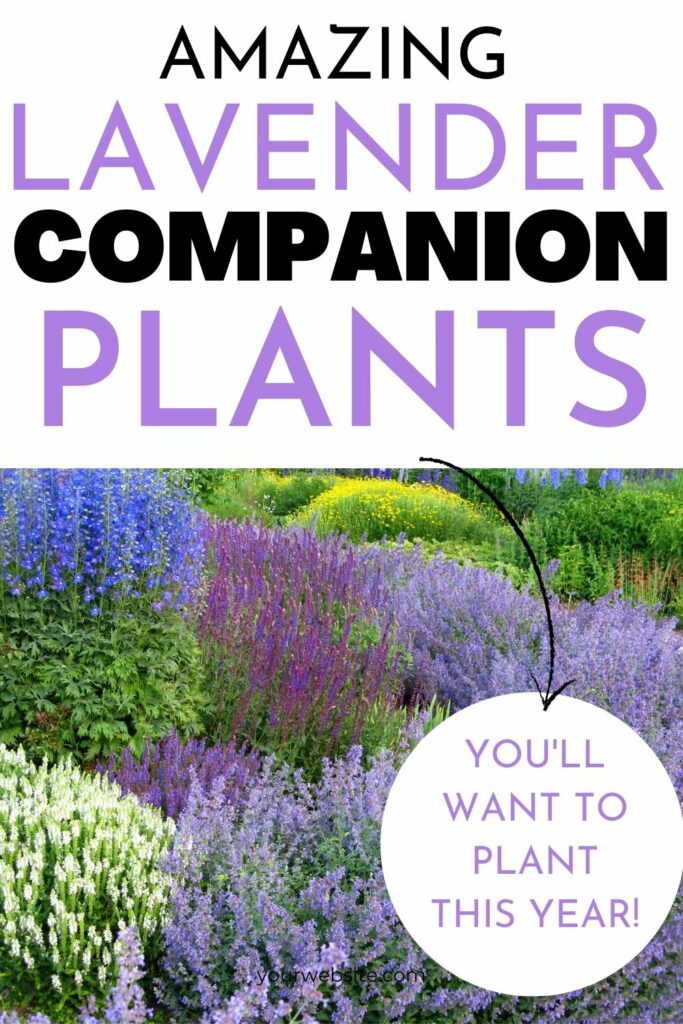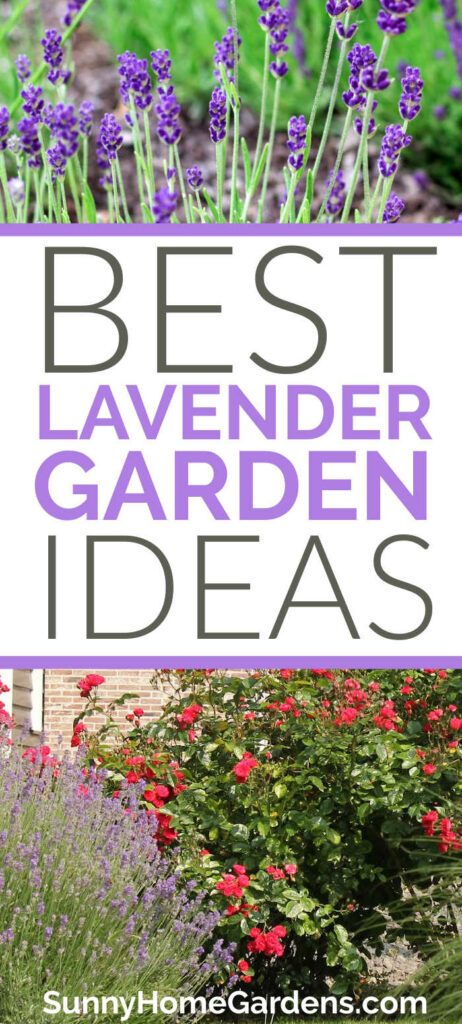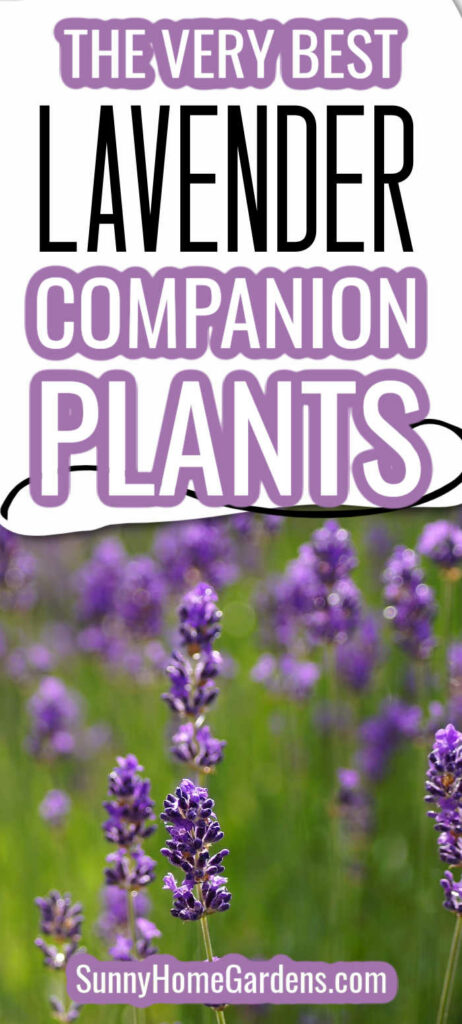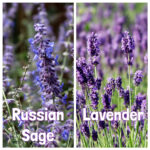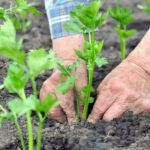Wondering what to plant with lavender? Here are the best lavender companion plants. They work well in pots, raised beds or directly into the garden.

Planting a lavender bush is an easy project. Lavender can be planted as a single plant in the garden or as a hedge along a walkway or in the back of a flower bed.
It takes about three years before a well-formed bush is created.
Check with the local garden center to find out what type of lavender grows best in the area; there are many varieties and some do better in warm weather while others are hardy and get through winter without much trouble.
You’ll want to plant lavender in the spring after all danger of frost is over. A fall planting is also feasible so long as there are two months before the first frost hits your area.
Locate an area that has well-drained soil. Sandy soil or soil that has gravel is also suitable for lavender, but amend clay soil so that it drains.
Make sure the soil pH is between 6.5 and 7.5. Choose a sunny area that gets six to eight hours of sun a day.
Remove all weeds from the area. Lavender does not compete well with other plants.
Water the lavender plant while still in the nursery container about one hour before planting. Let the excess water drip out the bottom of the container.
Dig a hole that is a little larger than the root ball of the plant. Place 1 inch of gravel or stone in the bottom of the hole to promote good drainage. Sprinkle in a little bonemeal and lime if the soil pH is low and mix them into the soil.
Prune the top and sides of the plant with garden shears. Remove it from the container and remove as much planting material as possible.
Lavender does better being planted with bare roots. Spread out the roots.
Sprinkle some soil in the hole and place the roots at the bottom. Start to fill the hole with soil and keep filling until the hole is full and it comes to the stem of the plant that was above ground in the original container. Press down to secure the plant in the ground
Water the plant well. Keep the ground moist for one week after planting.
Table of Contents
Tips & Warnings
Space lavender plants about 35 inches apart to allow for growth and good air circulation.
If the soil pH is above 7.5, lavender will not bloom. If the soil is too alkaline, the plant will not be able to absorb the nutrient from the soil.
What Great Companion Plants Work With Lavender Plants?
Lavender plants fill a garden with color and fragrance as well as fit well in a variety of landscapes.
Low-maintenance lavender tolerates dry summers and thrives in full sun.
Despite its name, English lavender (Lavandula augustifolia) hails from the mountainous areas of Southern Europe, and both Spanish and French lavender (Lavandula stoecha and Lavandula dentata) originated in the Mediterranean region. English lavender tolerates slightly cooler conditions than the other two varieties.
Sun-Loving Perennials Are A Good Choice
Lavender thrives in cool, rainy winters and warm, dry summers.
Combining lavender with a perennial plant that has similar cultural requirements creates a Mediterranean-themed planting bed.
Upright or trailing rosemary likes well-draining soils and features blue, pink, or white flowers in winter.
The delicate, silvery foliage of artemesia adds a cooling effect to the back or side of a sunny border.
Cistus or rockrose has pungent foliage and saucer-shaped, pink, or white flowers. A medium-sized shrub, it tolerates arid conditions and poor, rocky soil.
A Rose Companion That Has Similar Growing Needs
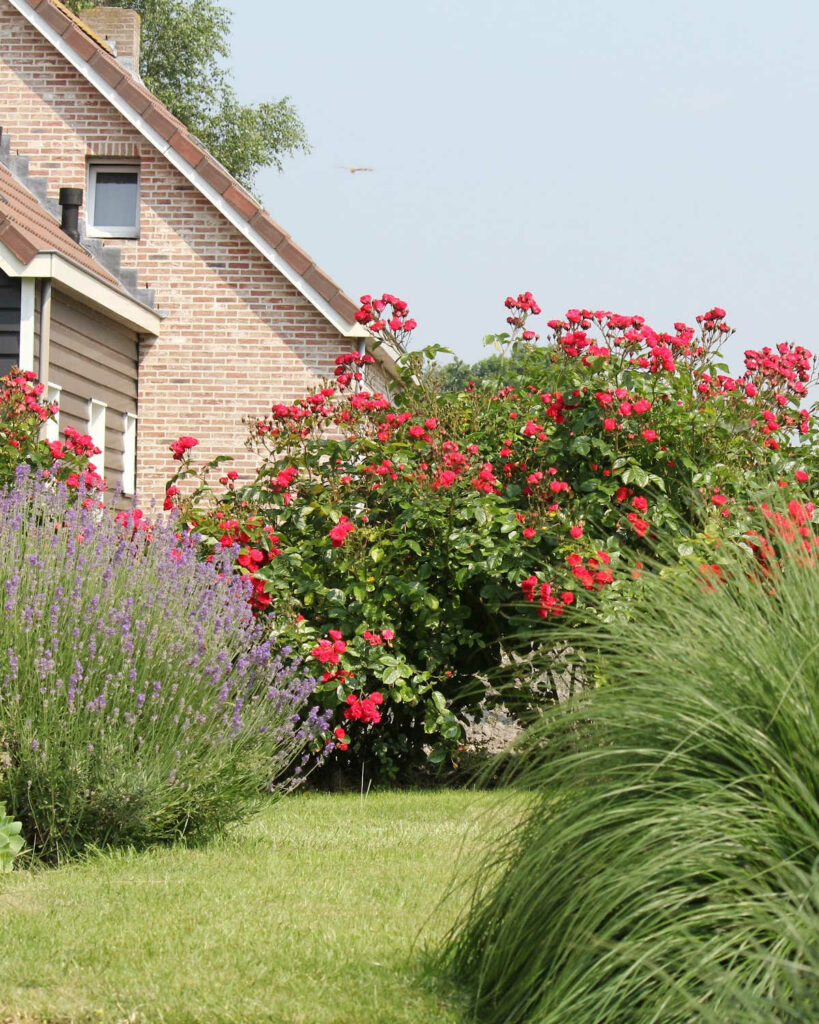
English and spanish lavender benefits from afternoon shade and some supplemental water in hot dry areas.
The plants grow slender stalks with small, fragrant, purple flowers for a delicate effect.
English lavender works well planted in front of white or pastel tea roses. Tea roses feature high-centered blooms on awkward plants.
Lavender, planted at the rose’s base, softens its appearance in the landscape. Keep the plants about 12 inches away from the plant’s base and line them up about 8 inches apart, forming a low, neat hedge.
A Herb Garden For The Best Results
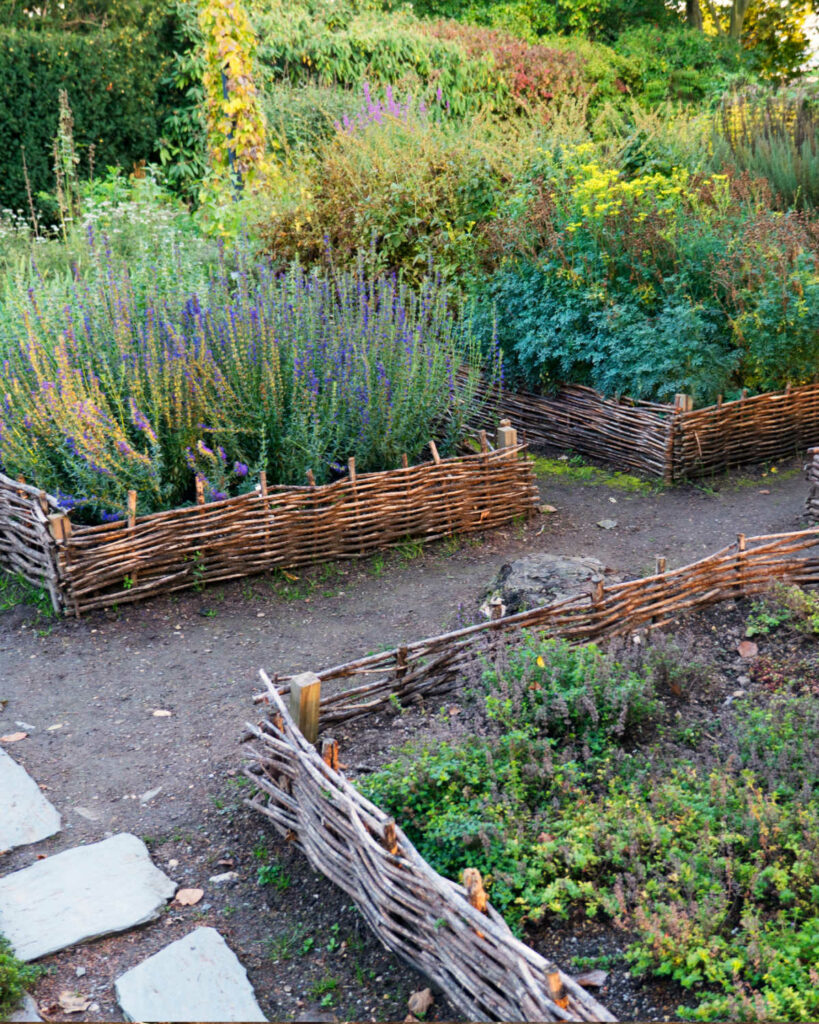
Lavender works well in herb gardens.
Construct a raised garden bed for edibles in close proximity to lavender bushes if you have concerns about pesticides or other chemicals in your garden soil.
Alongside your lavender garden, plant Mediterranean herbs and perennials, such as rosemary and sage, as well as annual herbs, such as basil, chives, and savory.
Check with your local nursery for information about which varieties of lavender are edible. Certain cultivars contain chemicals that irritate your digestive system.
Formal Plantings
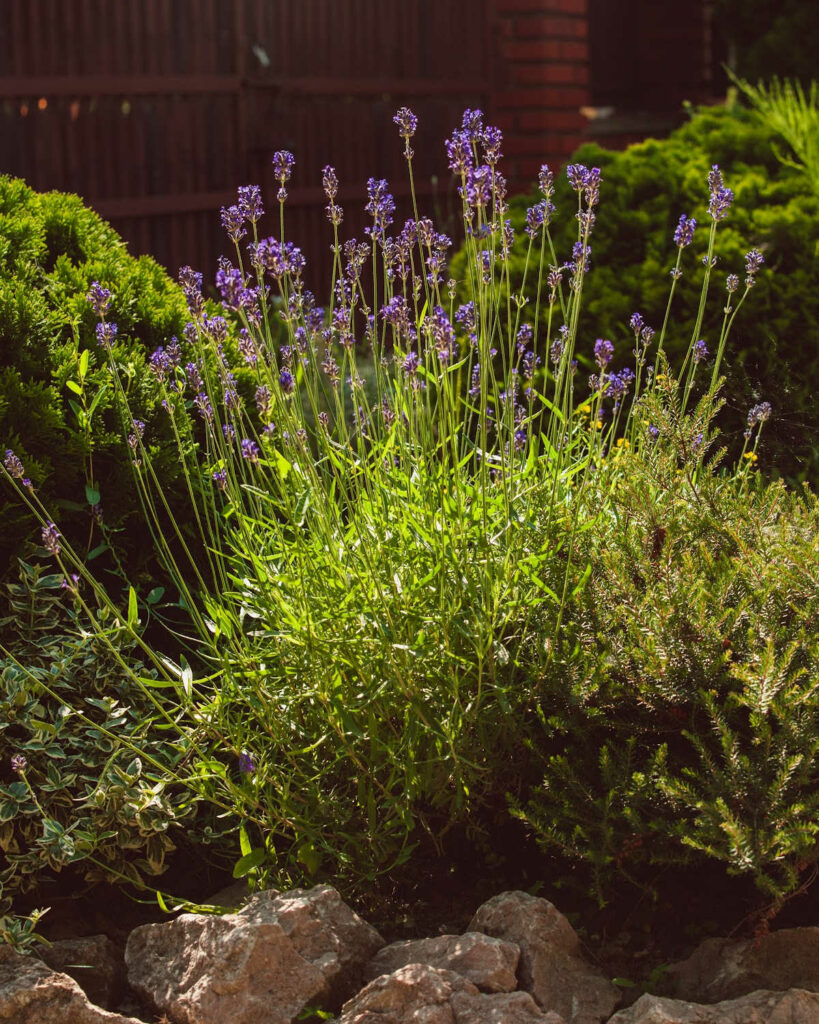
Lavender has a neat growing habit and it complements a formal courtyard planting.
Define square areas with clipped boxwood and then fill them with lavender plants and santolina.
Trim any spent blooms from the lavender and trim off the yellow-button flowers from the mounding, gray santolina plants to keep them neat and shapely.
Fill in the area surrounding the plants with pea gravel or other decorative rock.
What Other Kinds Of Plants Can I Use With Lavender?
The shape, size, and color of lavender flowers provide different contrasting and complementary situations in a garden, depending on which companion plants are used.
They can be combined with other types of lavender, other flowering plants, and certain herbs, as long as they all prefer the same dry, hot, and sunny conditions.
Coneflower
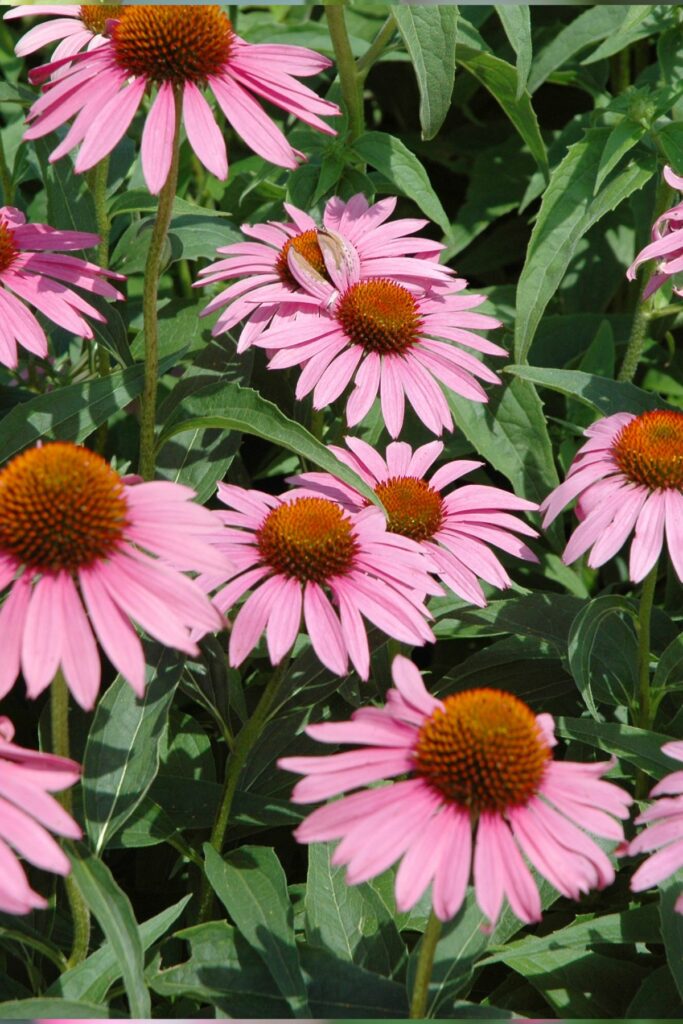
Coneflower (Echinacea) is a good companion plant.
These easy-to-grow perennial plants have a cone-shaped, dark orange center and petals shaded in white, pink, red, and purple that provides a great contrast against lavender.
Coneflowers tolerate dry, hot, and windy places and will welcome some light shade.
However, they do best in full sunlight where they can gain more strength and develop more flowers.
Bee Blossom
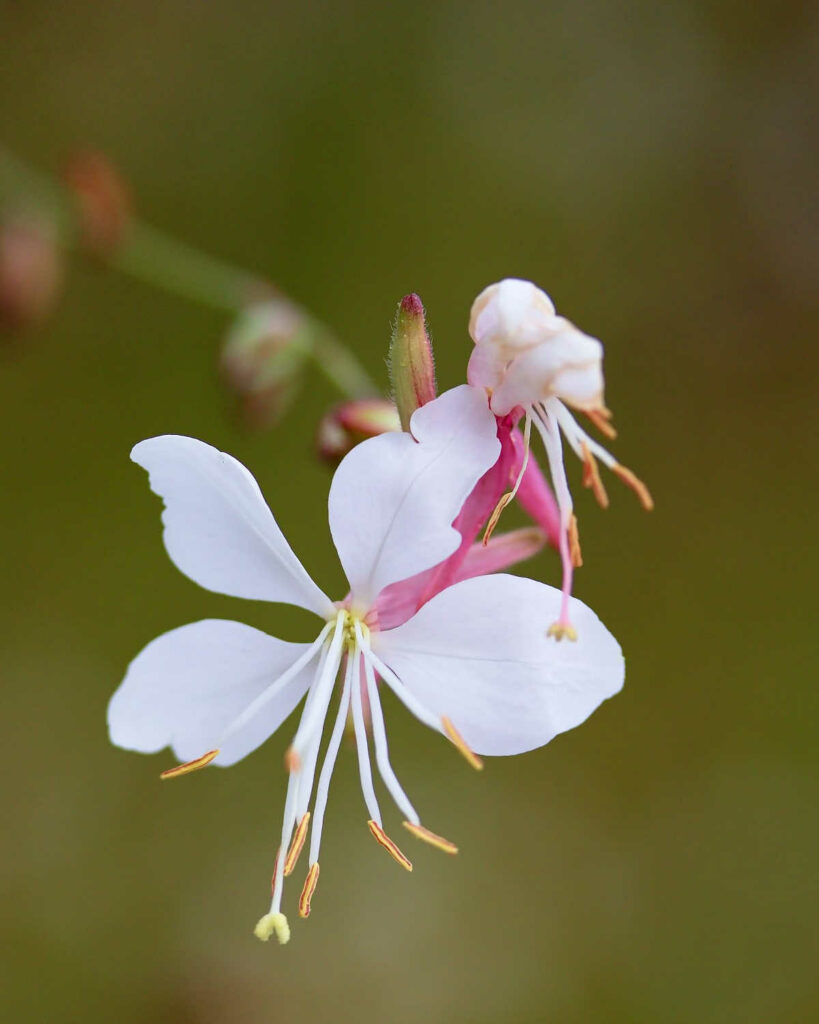
Bee Blossom (Gaura) is one of the best companion plants to have.
The white or pink flowers of bee blossoms grow on long stems, giving the plant a wispy look against tall lavender stalks.
Expect a lot of flowers if you water them regularly during the summer.
Give these drought-tolerant flowers full sun and well-drained loamy or sandy soil with a neutral to slightly alkaline pH and a lot of water.
Oregano
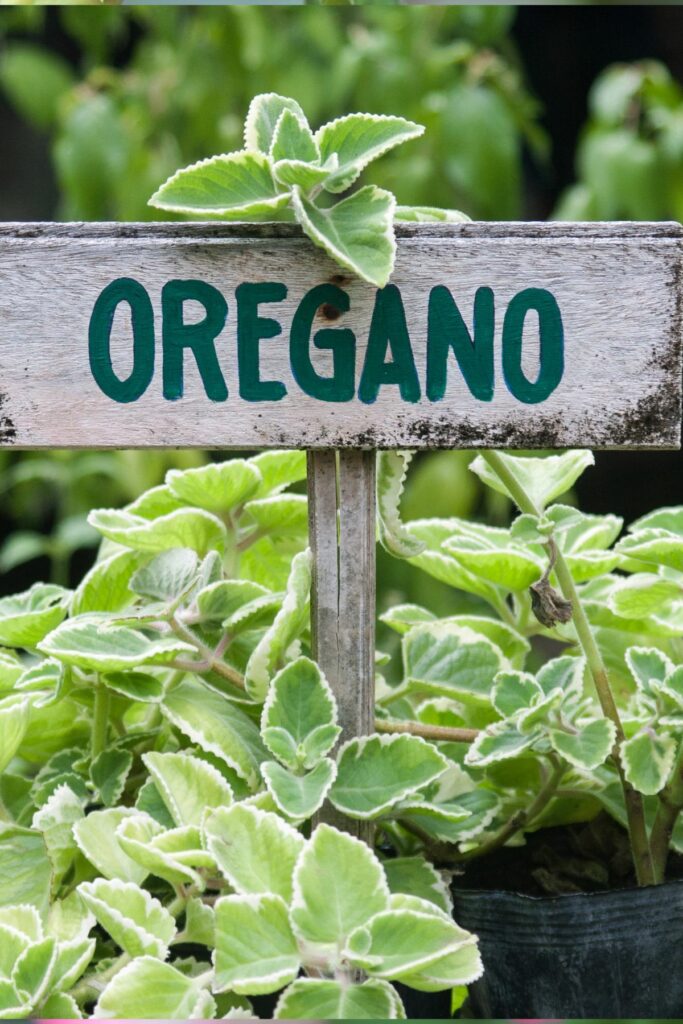
Oregano (Origanum Vulgare) is one of the great lavender companion plants.
The fuzzy, oval-shaped, purplish-green leaves on this bushy shrub are aromatic and measure 1 1/2 inches long.
In the summer, it develops small, tubular-shaped, purple blossoms that are 1/8 inch long.
Originally from the Mediterranean, it prefers sparse water and well-drained soil with a neutral to alkaline pH in full sunlight.
Oregano is great as lavender companion herbs.
Hummingbird Mint
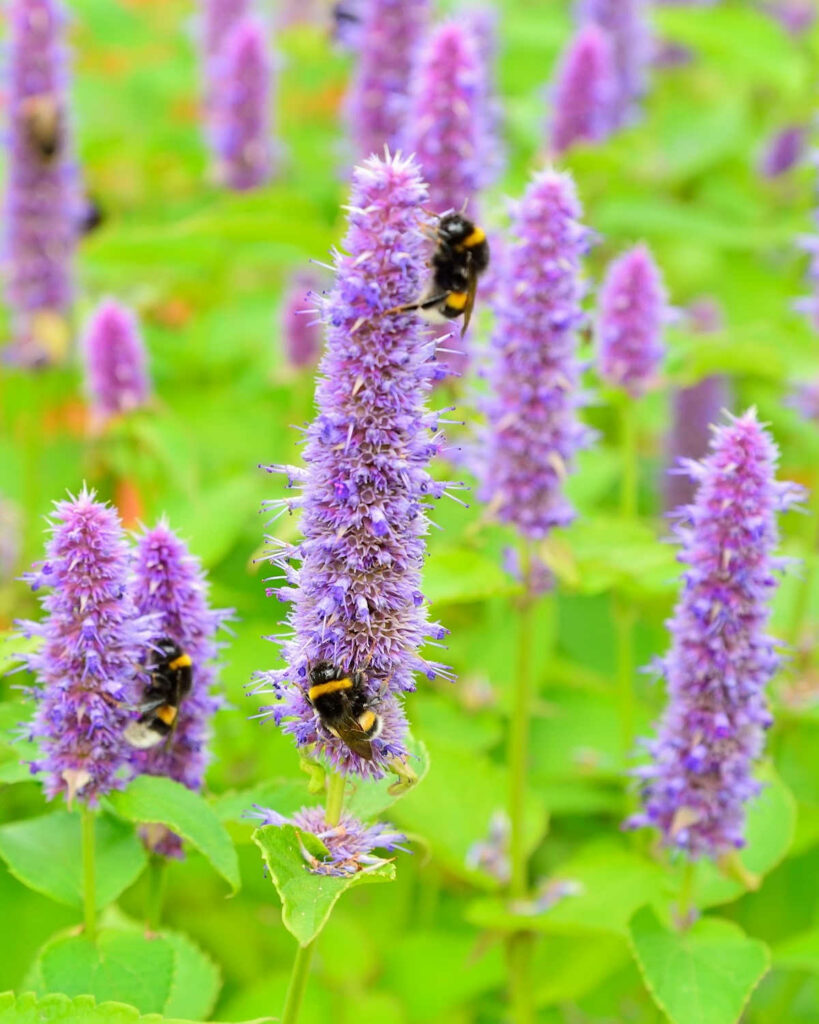
Hummingbird Mint (Agastache) are great for companion planting.
Hummingbird mints from the mint family are another group of sun-loving perennial hardy herb with showy, tubular-shaped flowers.
They develop blossoms from midsummer to fall in well-drained soil.
The orange-and-pink variety contains nectar that attracts hummingbirds while bees and butterflies love the blue agastache flowers of your home garden.
Beard Tongue
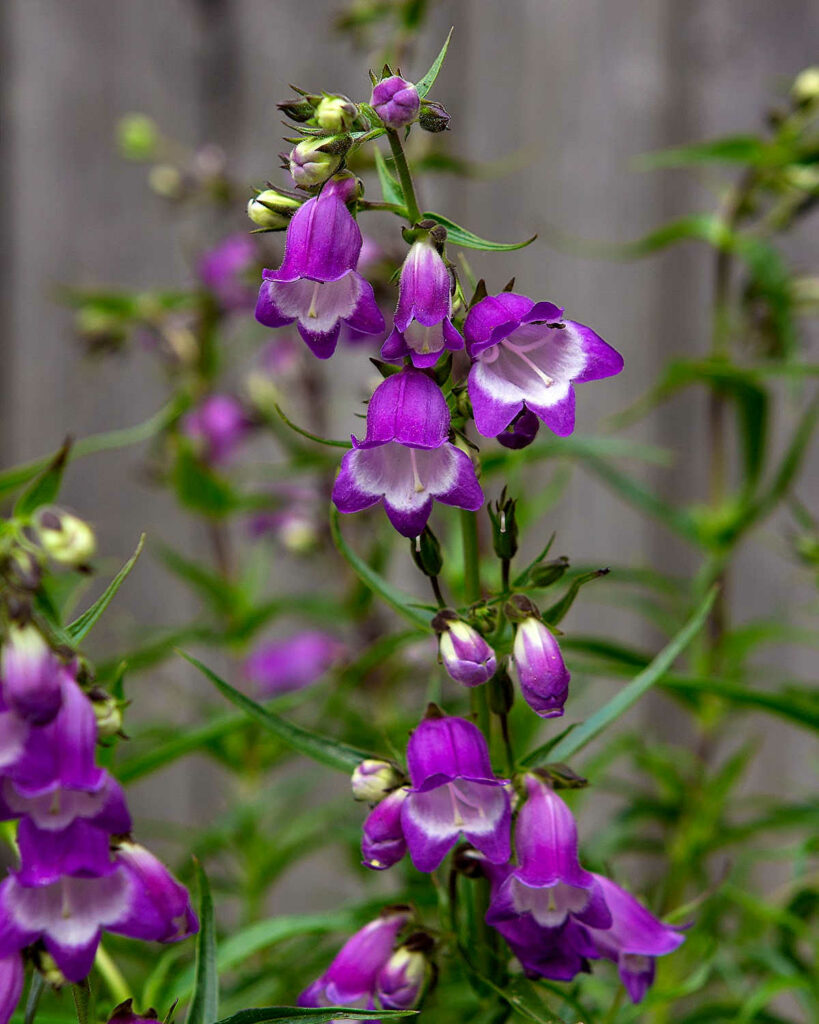
Beard tongues (Penstemon) are great companions for lavender!
Beard tongue is native to North America and has brightly colored, tubular-shaped fragrant flowers that go well with lavender, no matter which type of penstemon you choose.
These white, pink, red, or purple flowers grow during the early summer in full sunlight and well-drained or sandy fertile soil.
Penstemon is very low maintenance and does tolerate some partial shade as well as drying. It prefers acidic to slightly alkaline soil.
Moss Rose
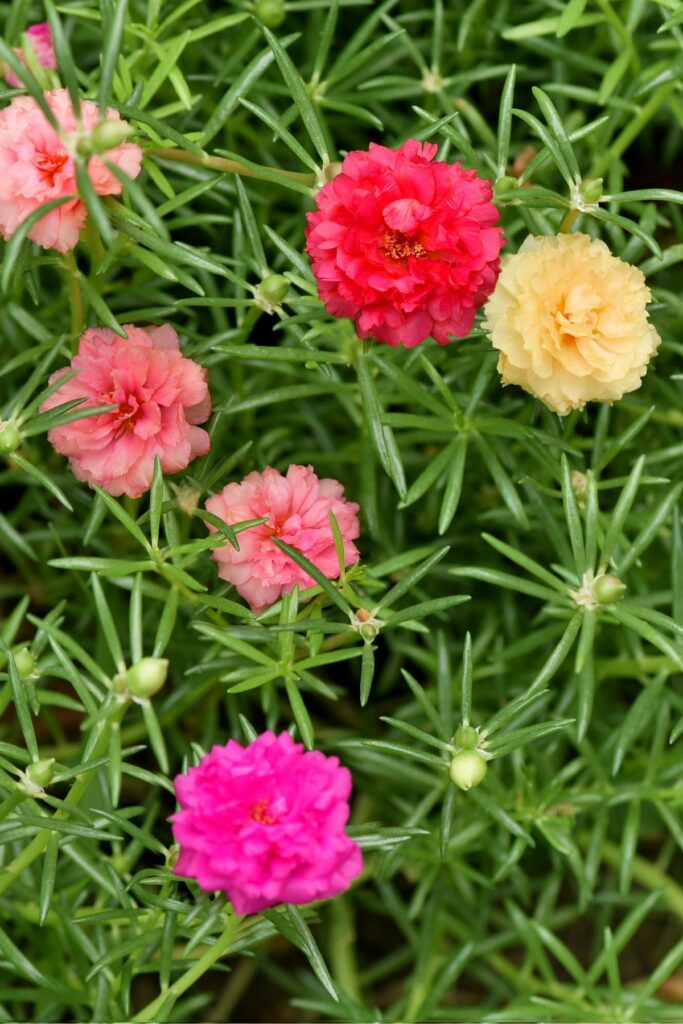
Moss Rose (Portulaca Grandiflora) is a great choice.
The annual moss rose bushes plant is a low-maintenance plant that originates from South America and needs full sunlight and regular water to grow its beautiful flowers.
On red-colored stems, you’ll find thick, soft, light green leaves in a cylindrical shape that measure about an inch long and have pointy tips.
The 1-inch flowers of this excellent companion plant, on the tip of the stems resemble roses, The flowers range in color from white to red; some have stripes or spots of contrasting color.
They have the habit of only opening in bright sunlight, choosing to remain closed on cloudy days and at night.
Rosemary
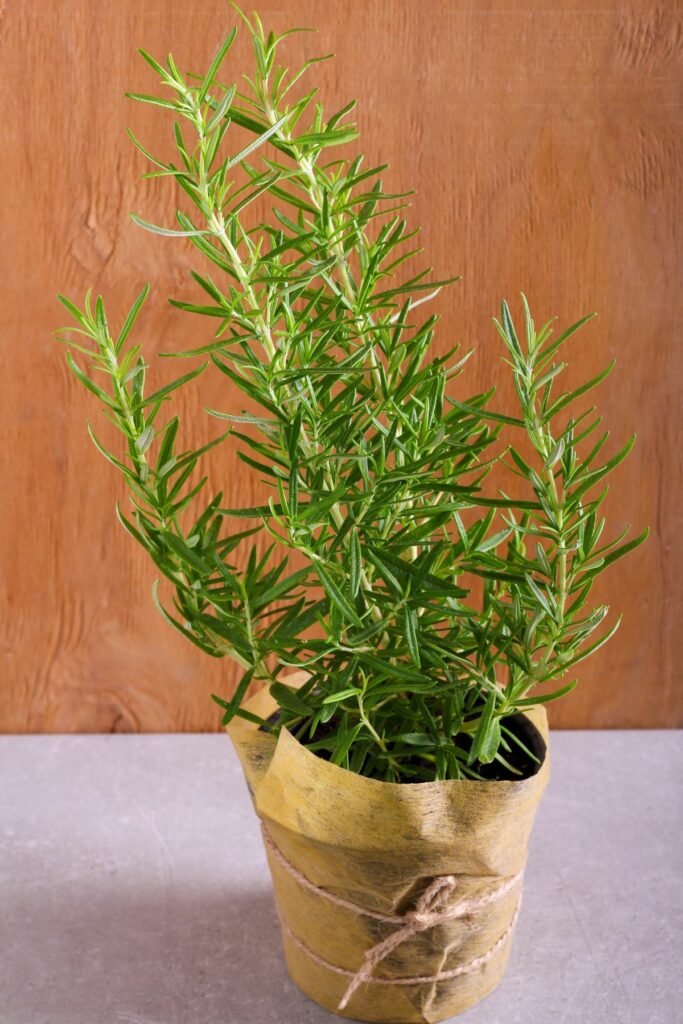
Rosemary (Rosmarinus Officinalis) is one of the best lavender companion plants
Rosemary bushes are one of the best garden plants that prefer the warm, dry, and sandy conditions of their native Mediterranean region.
Growing up to 6 feet tall and almost as wide, the needle-like leaves produce a pine-like scent that deters insects like whiteflies from other plants and vegetables and even hides the smell of other scented plants.
These 1-inch long leaves surround pale blue clusters of 1-inch long, tubular-shaped flowers in the winter and spring.
Make sure to “PIN IT” for later and follow Sunny Home Gardens on Pinterest for all the latest posts about plants!
